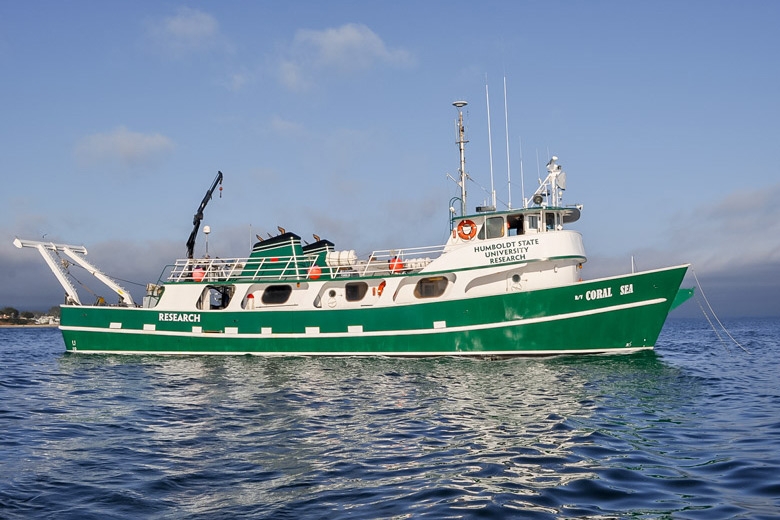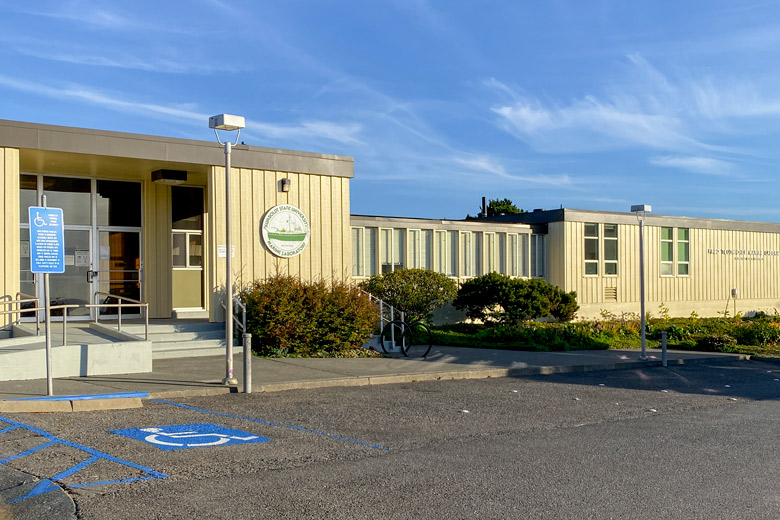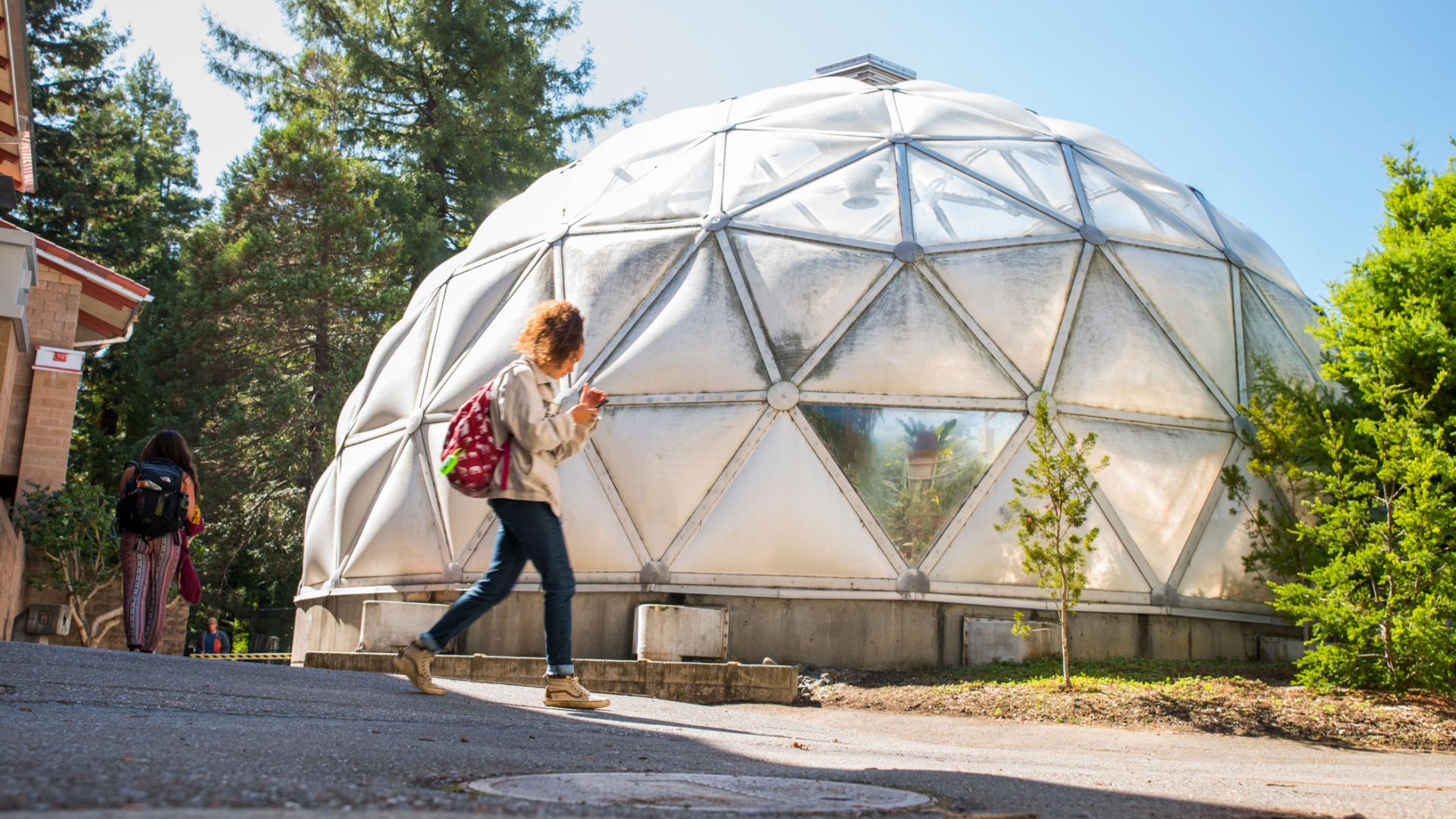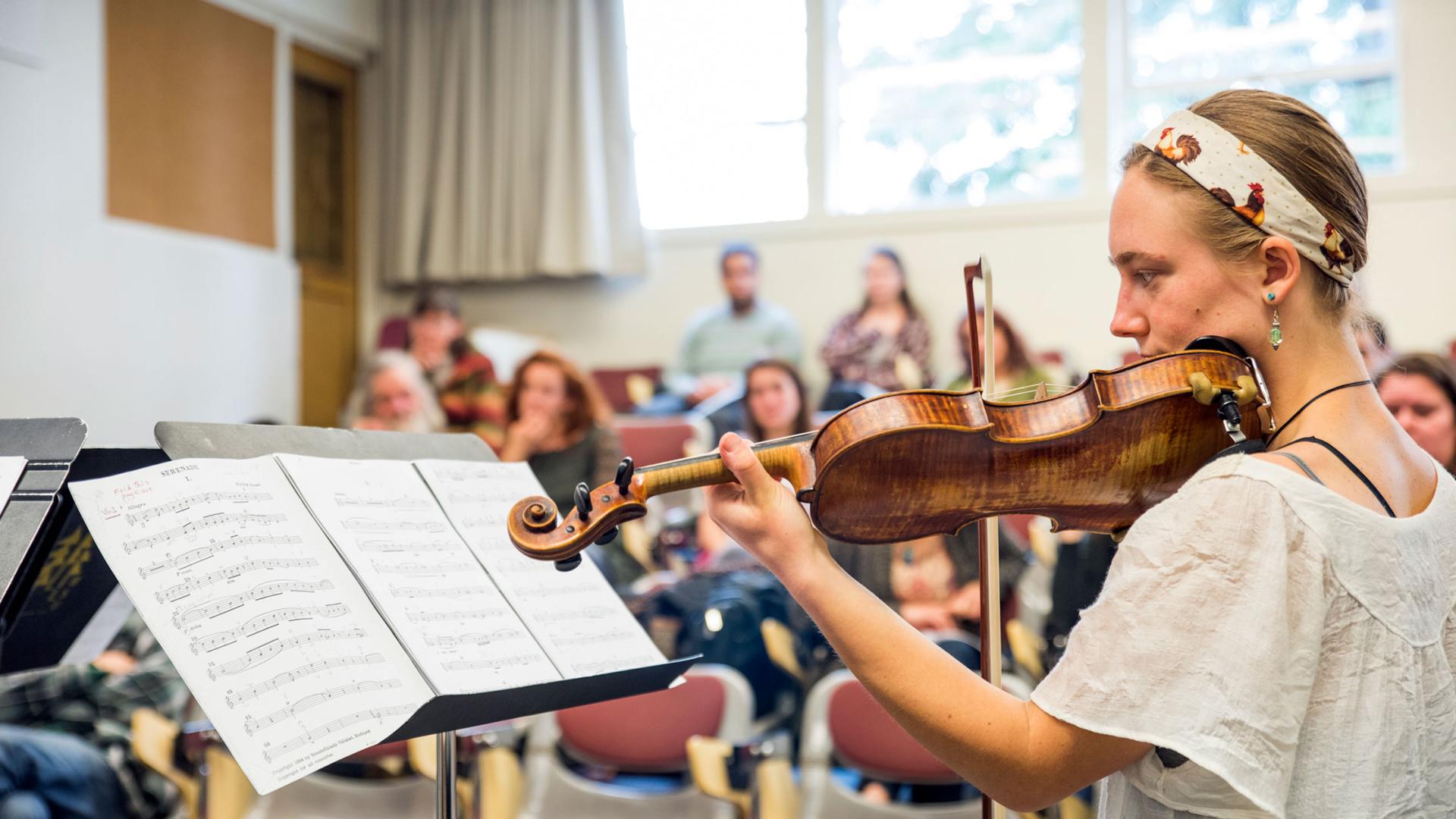Breadcrumb
Facilities
Marine Science students at Humboldt have access to some of the finest research facilities and programs around. Get details below and visit the facility websites to learn more.

R/V Coral Sea
Are you interested in migrating whales, birds, krill, fishes, changing ocean currents and migrating sediments? The R.V. Coral Sea is our mobile platform to study the biology, chemistry and geology of the coastal Pacific Ocean. Built in 1974 and refit in 2006 with two new 500 hp engines, the R.V. Coral Sea is used by all departments with marine science programs to support undergraduate instruction and student and faculty research.
From your first year at Humboldt until your senior cruise, you will have direct access to the coastal ocean on the R.V. Coral Sea. A large part of all the academic programs in Marine Sciences involve the collection and observation of living marine plants and animals in their natural environment. Humboldt operates and maintains its own research vessel expressly dedicated to the instructional mission of our academic programs.
On the R.V. Coral Sea students learn by doing in real world conditions using modern equipment. The experience you obtain in your sea time at Humboldt will train you for a marine science career that may carry you to any one of the seven seas.

Telonicher Marine Lab
The primary mission of the Humboldt Marine Lab is to support undergraduate instruction and research. The lab, located 14 miles north of the Humboldt main campus, overlooks the Pacific Ocean from a 100 foot bluff. In a 5-minute walk from the lab, down the hill, we can study the Trinidad Bay habitats of sandy beaches, rocky tidepools, and subtidal kelp beds. The adjacent Trinidad Kelp Beds was designated by the State of California as an Area of Special Biological Significance in 1979 in recognition of the pristine nature of this bay. The Redwood National and State Parks, Trinidad State Park, Smith River, Klamath River, Big, Stone and Freshwater Lagoons, and Mad River estuaries are a short drive from the lab.
The core of the Marine Lab is the seawater system that allows us to maintain a wide variety of local marine life available for classroom study and in-depth research. We have a 150,000 gallon state-of-art seawater system that provides virtually limitless high quality seawater for the teaching labs, research labs, and public display aquaria.
Several resident faculty have their research labs located at Humboldt Marine Lab and are available for help and guidance with your own research projects. There is ample space in the research wet lab to maintain and monitor marine life projects. Each year the faculty mentor undergraduate research projects on a diverse array of marine topics. The Humboldt Marine Lab serves as our permanent window on the sea.

Small Boats
For many students, staff and faculty to conduct coastal/marine research in the field, smaller boats are an ideal platform. The Humboldt boating program helps facilitate all kinds of inshore and near shore coastal research. From surveys of waterfowl or eelgrass in Humboldt Bay, to sea birds and marine mammals offshore, the Humboldt boating program has many small boats and kayaks as well as training to help conduct safe research while enhancing the educational experiences for our students.





